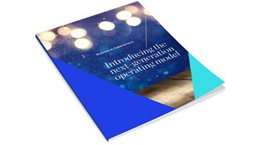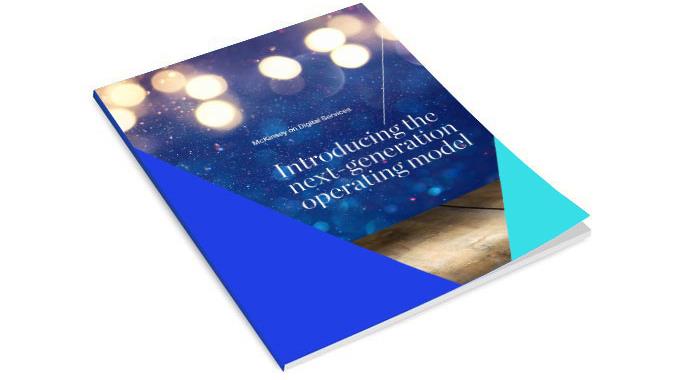The transformation of a legacy company whose roots lie in the era of the telegraph involves more than just lean deployments and agile methodologies. It requires a change in process and culture, the adoption of a common lingo, executive buy-in, and a center of excellence to ensure enterprise-wide success. Dan Nordlander, senior vice president of Western Union Way Operations at Western Union, discusses his company’s unique transformation journey with McKinsey’s Barr Seitz.
Stay current on your favorite topics
Jump-starting growth via transformation
The primary reason we decided to go through with this transformation is that we saw an opportunity to positively impact revenue through our daily operations and behaviors. We have a lot of great ideas in terms of investments to drive that topline revenue growth, but we needed ways to fund those.
In order to fund the investments, we decided that it was really important to do a transformation exercise, look for ways to gain efficiencies and effectiveness across our processes and procedures, and then use those efficiencies to fund the growth investments.
Getting everyone to speak the same language
One of the benefits that we’ve really seen as we’ve gone through these first two years of our journey is what happens when we get everyone speaking the same language. We started function by function, looking at individual deployments across our different groups in the company. As we’ve done that, everyone has started to speak the same language, whether it’s talking about going to huddles, doing process confirmations, conducting one-on-one coaching, or maybe doing floor walks. That’s really enabled a lot more collaboration across groups. Teams that may not previously have interacted with each other are now doing floor walks with each other.
The benefits of floor walks
One of our most important tools is the floor walk. This entails a leader or a manager being on the floor with people doing their day-to-day jobs, just observing the way they work. It’s not done from the perspective of correction or a negative consequence. It’s more about having the manager understand how the work actually gets done on the floor.
We do that both in-line, so you as a manager go and visit your own organization, but also visit other functions. And that could be at an operation site or it could be more of a frontline thing like a sales executive.
But it’s really all about allowing the manager to observe the way their employee works, what’s easy about that job and what’s hard about that job. And being with the people that are actually doing the work really helps the management get a better sense of where they can use their leadership and influence to make that process easier for the employee and better for the customer.
When people from different departments do these floor walks together, they’re realizing that they actually have a lot more in common with each other or notice areas where they can collaborate that they didn’t realize before. And when that happens, they start to see further opportunities for continuous improvement, leading them to new ideas about things they can do to improve efficiency or effectiveness.
Transforming the culture and the processes
When we started the transformation project, we came at it from the perspective of this being a cultural transformation just as much as a process transformation. So we established a set of what we call market-shaper practices that we wanted to focus on. These are things like rewards and recognition, top-down innovation, and consequence management.
There are 13 of these practices, and that’s really how we’re assessing success with the transformation across the organization. Behind those market-shaper practices are the lean tools and behaviors we develop and encourage. These are more tactical, day-to-day ways to implement lean across the organization. They can include creating strategy placemats (one-page strategy overviews that are easily shared), frequent team huddles, one-on-one coaching, and process confirmation.
The idea is to orient the company around improving these market-shaper practices, really getting the health of our organization strong, and becoming confident that if we can improve the health of the organization, the financial results will follow.
We scored ourselves as an organization on these market-shaper practices when we started the transformation in 2016. Every year or two we rescore ourselves in a company-wide exercise to see where we’re making progress and where we’re falling behind. That helps us refocus on the particular market-shaper practices that we need to double down on in order to continue improving during our transformation journey.

Introducing the next-generation operating model
The ‘Western Union Way’ to drive the change
We built the Western Union Way team, or the WU Way team as we call it, with ten high-potential individuals from around the company. How do you start there and end up with a fully embedded transformation across a company of 12,000 people? The way we approached it was to use the central WU Way team for capability building. We teach employees, and then they execute.
As we get the pilots completed, the idea is to turn the WU Way team into more of a center of excellence. They’ll be there to help you stay on track or course correct when you have troubles. But it becomes more self-driven, and that really enables the scale. That allowed us to go from ten people to about 50 change agents in the first wave, which will be able to support 2,500 employees and 4,000 vendor full-time employees within two years.
As the transformation gets embedded into the organization, the businesses start to run their own agile deployments. The center of excellence keeps things on track and makes sure we follow a framework and are tracking the results, so that we can measure the impact of the transformation across the whole organization.
Lean deployments and agile methodologies
Lean deployments are a big piece of our overall transformation program. The second aspect is our agile work, where we spin up teams that have learned and are now experts in using agile methodologies for product launches or IT development.
People are enthusiastic about the results of the pilot, and they want to see that in their own area. They essentially sponsor a team and loan the resources that are necessary. The central transformation team helps do the capability building in training those resources up, and then they run their own scaled-out deployment.
Now that these pilots are winding down, it’s been easy to get the support across the organization to find the resources necessary to establish teams that can scale it out in different areas across the company. So we’ll go from maybe four pilot teams to a plan to scale out across 400 people and maybe 30 teams next year.
All of that is dependent on people in the organization putting resources behind this kind of an agile transformation. The pilots help get buy-in across the organization, and then once we have that buy-in, it provides the resources necessary to scale.
The impact of executive buy-in
From the CEO down through his executive team, you see a real commitment to this transformation exercise and a real commitment to finding ways to optimize our processes, to get efficiencies, and to fund those investments that will drive topline revenue growth.
So it’s a real imperative across the top of the organization. And when you have that, it becomes easier to have a stronger level of influence than you might otherwise expect with a small team, because everyone in the organization is clear that, whether you’re working directly with the WU Way team or not, your job is to find ways for continuous improvement.
You’re expected to find ways to optimize your processes and drive value. You’re expected to come up with new ways of innovation to drive revenue growth across the organization. The executive team has done a great job of making it really clear across the company that this is something that’s expected of you. That support has made it a lot easier to have the influence we need to make the transformation successful.
Game-changing results
Looking back at the results of our work over the last couple of years across all of our deployments, you see some really impressive gains. We’re talking 30 percent, 40 percent, and, in some cases, deployments with a 70 percent return on capacity. So you’re really talking about game-changing differences between how processes worked before and after.
What’s really nice about that is that it’s so visually obvious. People who knew how a team or a group worked before can come in and see it’s night-and-day different. That makes it much easier to go into other areas of the organization and say, “We did this in this part of the company. Imagine what we can do if you let us work with your team as well.”
You’re starting to see that happen culturally. Maybe it started out as more of a push, where we were looking to come in and work with a team. Now it’s more pull. People are asking us, “Hey, can you come help me? I want to see those same results in my organization.” I think that’s an indication of how well it’s really working across the company.


